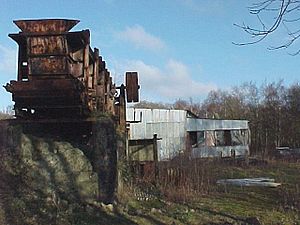Auclaye facts for kids
| Site of Special Scientific Interest | |
 |
|
| Area of Search | Surrey |
|---|---|
| Interest | Geological |
| Area | 0.6 hectares (1.5 acres) |
| Notification | 1988 |
| Location map | Magic Map |
Auclaye is a special place in Surrey, England. It's known as a Site of Special Scientific Interest (SSSI) because of its amazing geology. This means it's protected by law due to its unique natural features. Auclaye covers about 0.6 hectares, which is roughly the size of a small sports field. It became an SSSI in 1988.
Auclaye is also part of the Geological Conservation Review. This is a program that identifies and protects the most important geological sites in Great Britain.
Contents
Auclaye: A Window to Ancient Insects
Auclaye is incredibly important for scientists who study ancient insects. It holds many well-preserved insect fossils from the Lower Cretaceous period. This time was about 145 to 100 million years ago, during the Mesozoic Era, often called the "Age of Dinosaurs."
What Makes the Fossils Special?
The fossils found at Auclaye are special because they are so well preserved. Scientists can see the bodies of these ancient insects very clearly. This helps them learn about what life was like millions of years ago.
Discovering New Species
Many different types of insects have been found here. Some of these are completely new species that scientists had never seen before! For example, new types of aculeate hymenoptera have been discovered. This group includes insects like bees, wasps, and ants. New kinds of crickets have also been found. These discoveries help us understand how insects have evolved over time.
Why is Auclaye Important?
Auclaye acts like a time capsule, giving us clues about Earth's past. By studying the fossils, scientists can learn about ancient climates, environments, and how different species lived together. It helps them piece together the puzzle of life on Earth millions of years ago.
Access to Auclaye
It's important to know that Auclaye is on private land. This means there is no public access to the site. Its protected status helps keep the valuable fossils safe for scientific study.

